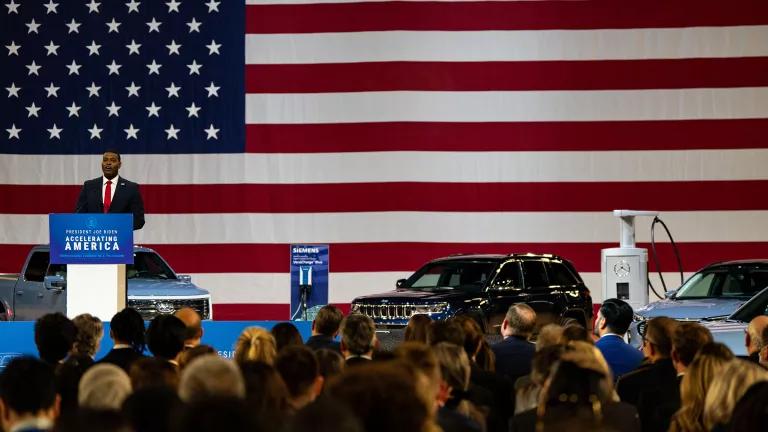
Co-authored with Charu Lata, Lead Consultant – Electric Mobility and Clean Energy, NRDC
India is set to bring nearly 3,000 electric vehicle (EV) charging stations online across the country starting this year and a new report released today focuses on the smartest places to put them.
Increasing the fleet of EVs and charging infrastructure can be key to improving air quality in Indian cities, enhancing energy security (by reduced dependence on imported crude), and fighting climate change. To support robust EV growth and use, a strong public charging infrastructure is needed. Location is Everything: Approaches to Siting Electric Vehicle Charging Infrastructure for the Indian Context, a new issue brief by NRDC and partners, Administrative Staff College of India (ASCI) and Gujarat Energy Research and Management Institute (GERMI), focuses on optimal siting of charging infrastructure. The issue brief was released today at the World Sustainable Development Summit 2020.
Our research presents three different approaches that can be used for locating EV charging stations and site selection:
- “Local Knowledge” Stakeholder Approach that can be used for smaller communities with limited budgets and/or with limited data availability. The approach involves decision-makers convening local experts with knowledge on traffic patterns and urban spaces to identify preferred locations.
- Modeling Approach that can be used by communities with extensive data on traffic patterns and vehicle usage, together with resources to model the charging needs over time. This model-based approach usually requires less local human knowledge in specific areas but requires data sets of considerable size on locations and potential vehicle travel trajectories. It is particularly useful if the planning region is too extensive for decision-makers to rely exclusively on local knowledge, and when good data is already available or can be easily collected.
- Hybrid approach that can be used when both technical modeling and stakeholder participation is applied for planning. Modeling results are usually applied to transform sizable data into human-interpreted siting suggestions for the area, followed by utilizing local stakeholder knowledge to verify and refine the siting solution from the model.
An advantage of the hybrid approach is that it makes initial planning for larger regions more manageable by utilizing existing data to develop an initial plan for stakeholders to react to and inform. In the later phase before implementation, stakeholder engagement and local knowledge can then be focused on “filling in the gaps” between the modeling results and reality.
Given that many Indian cities may be able to secure active stakeholder involvement but may have limited data and resources, the hybrid approach is potentially appealing. An initial modeling phase followed by stakeholder discussions can ensure the selections are viable in the real world, and that sites are selected with holistic engineering, economic, and policy considerations to have high utilization.
Analysis by the NITI Aayog and the Rocky Mountain Institute shows that 30% EV deployment by 2030 can generate an estimated saving of up to 474 million tons of oil equivalent (Mtoe) and 846 million tons of net CO2 emissions over their lifetime. A lack of charging infrastructure creating “range-anxiety” among EV purchasers is considered one of the major factors hindering rapid EV adoption. Recognizing this, the Department of Heavy Industry approved setting up 2,636 electric vehicle charging stations across the country in January 2020 under the FAME II scheme, a national incentive program for promotion of electric and hybrid vehicles. Thirteen states, including Delhi, Gujarat, Telangana and Karnataka, along with private companies are moving forward with electric mobility plans in India.

Moving to electric vehicles is a major opportunity for the Indian economy to reduce air pollution, save energy, and reduce carbon pollution. State action supporting charging infrastructure deployment is a key element to advancing electric mobility in India. NRDC and our partners, ASCI and GERMI stand ready to work with states and stakeholders to advance e-mobility in India.




